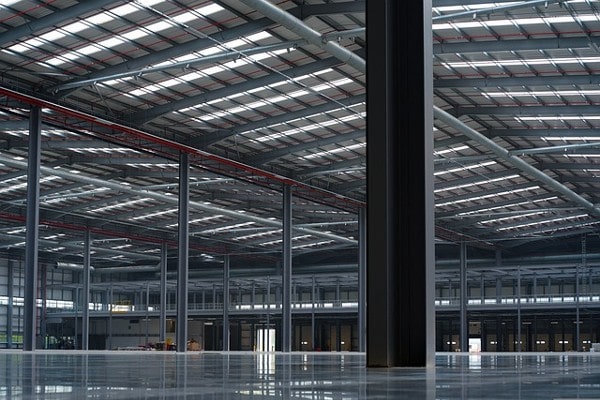Online retail sales are forecast to increase by 48% over the next five years across the top seven e-commerce markets of mainland Europe.
As a result of this increase, global property advisor Knight Frank estimates that an additional 3.5m sq m of last-mile logistics space will be needed across these countries before 2026.
According to Knight Frank’s latest European Logistics Report 2022, each €1 billion in online retail sales requires c. 24,000 sq m of urban logistics space. In France, Germany, Italy, Spain, the Netherlands, Sweden and Poland, online retail sales totalled c. €293 billion in 2021, with an online penetration rate of 15.6%. Penetration rates are expected to increase across these markets over the next five years, averaging 19.3% by 2026. This is expected to drive online retail sales to €434 billion – a €142 billion increase from current levels – and fuel demand for urban distribution hubs which facilitate home delivery.
The requirement for additional last-mile space is largest in Germany, where an estimated 1.37m sq m of space will be needed by 2026. France could require approximately 639,000 sq m, Poland an additional 536,000 sq m, and Spain a further 378,000 sq m. Knight Frank has also ranked Europe’s submarkets by projected demand for last-mile space over the next five years1. Paris ranks top owing to its high population density, and therefore its high retail spend per sq km. Three German cities, Berlin, Munich and Hamburg, feature in the top five demand hotspots.
Based on an analysis of e-commerce operators in the UK and across mainland Europe, Knight Frank found that between 20-25% of total warehouse space is currently allocated to last-mile ‘spoke’ facilities. With urban populations growing across Europe and consumers increasingly demanding faster deliveries and on-demand services, the proportion of space allocated for last-mile distribution hubs has been climbing.
Despite this, there has been a reduction in the availability of land zoned for industrial use across leading European markets, particularly around major urban centres. Industrial vacancy rates within cities across the continent are at record lows as a result. In Barcelona, for example, the vacancy rate was just 3% at the end of 2021 compared with a 5.4% average rate across the whole of Spain. With vacancy at record lows and development activity constrained in these markets, demand is likely to continue to outpace supply, sustaining rental growth across mainland Europe.
Claire Williams, Industrial & Logistics Research Lead at Knight Frank, commented: “As Europe’s urban population continues to swell, consumption in these centres will rise concurrently. Paired with growing online retail penetration and a continued focus on convenience and speed of delivery, the result will be increased demand for urban logistics space across the continent.
“Competition between use classes is constraining logistics development, particularly in those locations with the highest population densities. Though the adoption of new and emerging technologies is enabling more efficient use of space and potentially lessening the total amount of space needed, the shortfall of available urban distribution space is likely to persist for the foreseeable future, supporting rent levels in urban markets across Europe.”
Richard Laird, Co-Head of European Capital Markets at Knight Frank, added: “Several markets across Europe are well-positioned to benefit from high growth economies and expanding retail sales. While Covid has accelerated growth in online retail and home delivery, some European markets remain some way behind more mature e-commerce markets such as the UK, therefore offering the potential for further expansion. Robust tenant demand and limited supply are driving up values and encouraging investors to expand their urban logistics platforms.”
Top 10 mainland European demand hotspots;






















